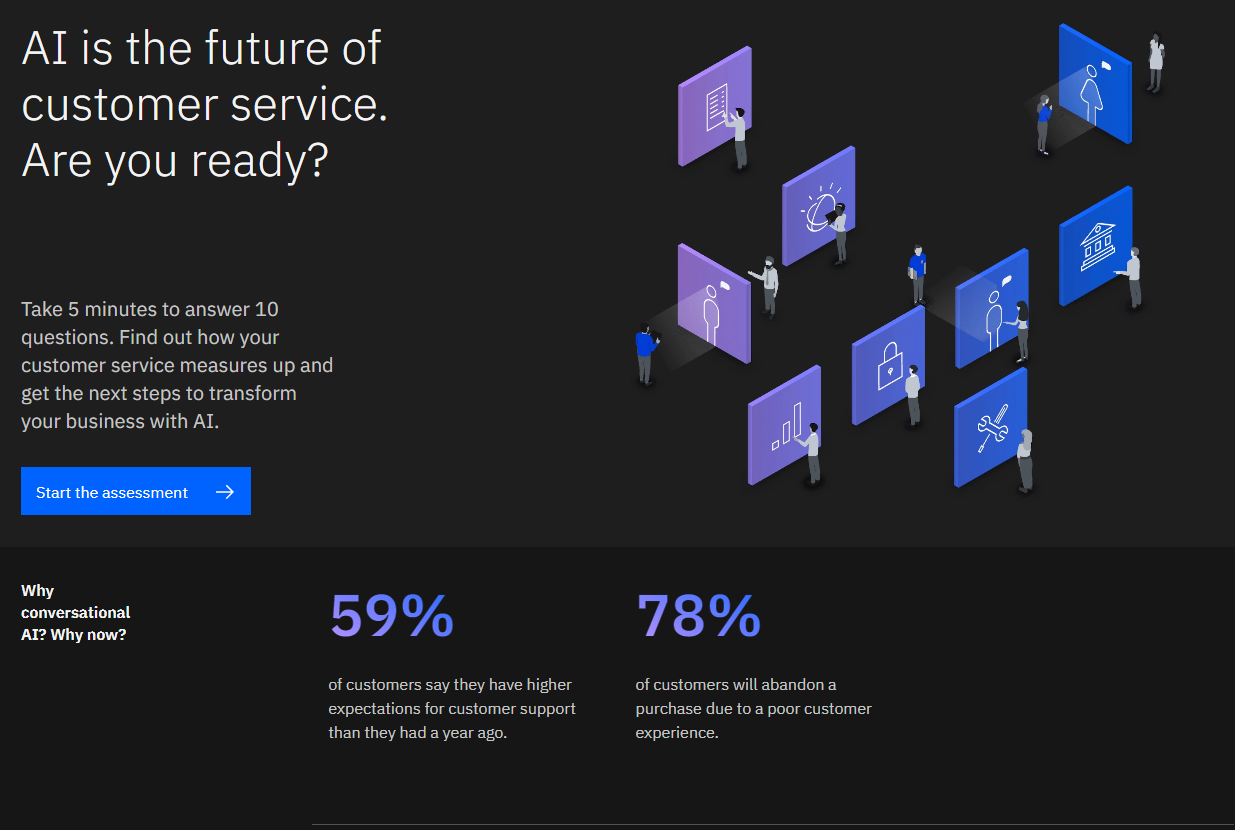Return of the intranet: The age-old platform is making a comeback
Businesses are embracing the next-gen intranet as they seek to create engaging and inclusive communications experiences


An intranet is a private internet space internally accessible only by an organisation's staff. An evolution of the public internet, intranets became highly popular as a means of internal communication from the 1990s onwards.
Since the inception of intranets, other collaborative tools have appeared, alongside, of course, social media networks that pushed intranets out of favour. However, as the COVID-19 pandemic deepened, enterprises were forced to quickly find a communications channel that was secure, private and would enable them to reach all their workers no matter their location.
As such, there’s been a resurgence of interest in how businesses can wield intranets. As we emerge from COVID-19, enterprises are casting an eye towards their post-pandemic digital futures, with the humble intranet once again establishing itself as a critical component. These channels are becoming a key part of development strategies, especially in the way they can be used to support the wellbeing of staff, and reinforce company culture.
It’s also essential to appreciate exactly how – and where – the culture of an enterprise manifests. Where staff once occupied an office space, the shift to mass remote working and hybrid work has challenged companies to establish new ways to keep workers connected. Indeed, research from the Chartered Institute of Personnel and Development (CIPD) concludes 40% of workers will never return to the office.
Robert Rutherford, CEO at IT consultancy QuoStar, tells IT Pro the intranet is essential to make hybrid work efficient and effective for all businesses. “The intranet can be an important anchor piece to improve the remote worker’s experience,” he says, “allowing them to get some sort of window into the wider organisation.” In this way, the shifting labour market and the new, post-pandemic age of hybrid work is crucial to the birth of the modern intranet.
Intranets are connecting organisations
Many companies may already have a dormant intranet. Others will need to build an intranet from scratch. In each of these scenarios, it’s critical the intranet has clearly defined strategic goals. Intranets should allow employees to locate information quickly. An intranet can also communicate and support the business's brand values and the enterprise's culture. For example, employee experience (EX) is proving to be a significant asset companies can use to reinforce workforce loyalty as they combat the great resignation.
One of the significant issues with intranets when they first appeared was the low uptake of users. Most often, employees did not see their intranet’s advantages because the project had been poorly conceived with little input from the workforce and ineffective communication from management.
Get the ITPro daily newsletter
Sign up today and you will receive a free copy of our Future Focus 2025 report - the leading guidance on AI, cybersecurity and other IT challenges as per 700+ senior executives
Rutherford warns an intranet initiative must be approached with all the due diligence of any new project. "Intranets can deliver significant value to an organisation,” he says, “but they do require significant investment in terms of time and money. A business cannot simply install a new platform and expect it to make any difference to an employee’s working life, or to deliver any effective outcome for the wider business.”
Today's intranets are for their users. They’re the core focus of this technology. If high levels of engagement are to be attained, an integrated approach to their development must be taken. Successful intranets are not a directive but mandated and validated by the people who use them.
What do next-gen intranets look like?
“What we’re really seeing is a step change in how companies’ put information in the hands of employees – and what they require from the platforms that help them do so,” says Christine Trodella, head of B2B commercial sales at Meta’s Reality Labs, and head of Workplace from Meta.
Trodella continues: “The companies and HR teams that get this right – providing employees with access to information and training without roadblocks – will reap the benefits of a connected, informed and empowered workforce.”
RELATED RESOURCE

So, what does a next-gen intranet look like? A dashboard interface has remained popular. Accessing company information, tasks, booking meetings, leave, and other essential office services also form the core of modern intranets. Far from being an abstract idea, companies are already striving to mimic such a platform. One such example is Microsoft's Viva, which connects Teams to Microsoft 365 in what the company calls 'an employee experience platform.'
"We need to stop thinking about work as a place, and start thinking about how to maintain the culture, connect employees, and harness human ingenuity in a hybrid world," says Jared Spataro, corporate vice president, Microsoft 365. "As the world of work changes, the next horizon of innovation will come from a focus on creativity, engagement and wellbeing so organisations can build cultures of resilience and ingenuity."
Time will tell whether Viva's modular approach will become as commonplace as Teams has evolved during COVID-19. The difference between the intranet of yesterday and that of today is the extent to which users can personalise their accounts to make them unique. Linking to collaboration tools can also offer the 'watercooler connections’ many workers miss. The delivery of support for wellness, education and training, too, are also being included within next-gen intranets.
Intranets are shared spaces and experiences
Businesses are looking to make – in some cases – radical changes to how they organise their enterprises to future-proof their workplaces. Redrawing their digital transformation roadmaps is also important as companies transition to post-pandemic businesses. From a strategic planning perspective, this means supporting workforces with the digital tools they need and understanding how the connected internal spaces they use must also form a critical component of the blueprint.
Meta’s Christine Trodella concludes: “When it comes to knowledge at work, the most important thing is access. And to provide that access, companies must invest in tools that are inclusive and easily searchable and shareable on any device. In the new world of work, we shouldn’t be filing documents away never to be seen again, we need to take them to the people that need them.”
Intranets have been used for decades as an internal private communications channel. In the modern era, however, intranets can be spaces where businesses can connect with their workforces on a more fundamental level. Ultimately, an intranet will succeed or fail with its users; they're built to offer a shared space where information can be accessed, but also where the culture of a business can be practised.
Intranets also align with multiple business goals, including the support of workers no matter their location. As a result, intranets have become a central hub around which internal communications orbits. More vitally, however, next-gen intranets deliver a comprehensive channel to support EX – a vital component to ensure businesses thrive in the post-pandemic landscape.
David Howell is a freelance writer, journalist, broadcaster and content creator helping enterprises communicate.
Focussing on business and technology, he has a particular interest in how enterprises are using technology to connect with their customers using AI, VR and mobile innovation.
His work over the past 30 years has appeared in the national press and a diverse range of business and technology publications. You can follow David on LinkedIn.
-
 Bigger salaries, more burnout: Is the CISO role in crisis?
Bigger salaries, more burnout: Is the CISO role in crisis?In-depth CISOs are more stressed than ever before – but why is this and what can be done?
By Kate O'Flaherty Published
-
 Cheap cyber crime kits can be bought on the dark web for less than $25
Cheap cyber crime kits can be bought on the dark web for less than $25News Research from NordVPN shows phishing kits are now widely available on the dark web and via messaging apps like Telegram, and are often selling for less than $25.
By Emma Woollacott Published
-
 'Digital hide-and-seek': Workers are wasting hundreds of hours a year sourcing the information they need to carry out their role
'Digital hide-and-seek': Workers are wasting hundreds of hours a year sourcing the information they need to carry out their roleNews Knowledge workers globally are wasting a quarter of their working week tracking down information, new research from Atlassian has revealed.
By George Fitzmaurice Published
-
 Enterprises are doubling down on IT optimization strategies – and it’s delivering huge financial returns
Enterprises are doubling down on IT optimization strategies – and it’s delivering huge financial returnsNews Organizations that have cracked IT cost optimization and innovation reap the rewards both financially and in terms of time to market.
By Emma Woollacott Published
-
 Unlock the potential of LATAM’s booming crypto market
Unlock the potential of LATAM’s booming crypto marketwhitepaper Strategic pathways for crypto companies looking to expand into Latin America
By ITPro Published
-
 Untethered: How CIOs and CISOs are paving the way for the new hybrid workforce
Untethered: How CIOs and CISOs are paving the way for the new hybrid workforceWhitepaper Effective techniques to transition from exposed legacy infrastructure to an effective zero trust strategy
By ITPro Published
-
 The online cash revolution
The online cash revolutionwhitepaper Why adding eCash to the checkout unlocks more growth
By ITPro Published
-
 Unlocking the power of your digital services
Unlocking the power of your digital servicesSponsored Businesses have invested significant cash into technology since COVID-19, but are they really getting their money's worth?
By ITPro Published
-
 Delivering fast and secure digital experiences for the modern hybrid workforce
Delivering fast and secure digital experiences for the modern hybrid workforceWhitepaper A new approach to digital experience monitoring that can monitor the health of all systems
By ITPro Published
-
 Collaboration is the glue that holds your business together
Collaboration is the glue that holds your business togetherSPONSORED A combination of productivity tools and cloud telephony can enable the best from your workforce
By ITPro Published